11 July 2023 : Daily Answer Writing
Mains Answer Writing
One of the key components of these exams is the written test, which consists of a number of essay and comprehension questions. Candidates are expected to write clear and well-structured answers that demonstrate their knowledge and understanding of the topics being tested.
11-July-2023
Q. The Indo-Islamic style greatly influenced the provincial style of architecture during the Delhi Sultanate period. Critically analysis. (150 words)
Answer:
Introduction: Indo-Islamic architecture is a unique architecture of the Indian subcontinent generally produced by Islamic patrons. Around the 12th century AD, this architecture began to amplify with the local essence of the provisional kingdom of Malwa, Gujarat, Bengal, Golconda, and so on. 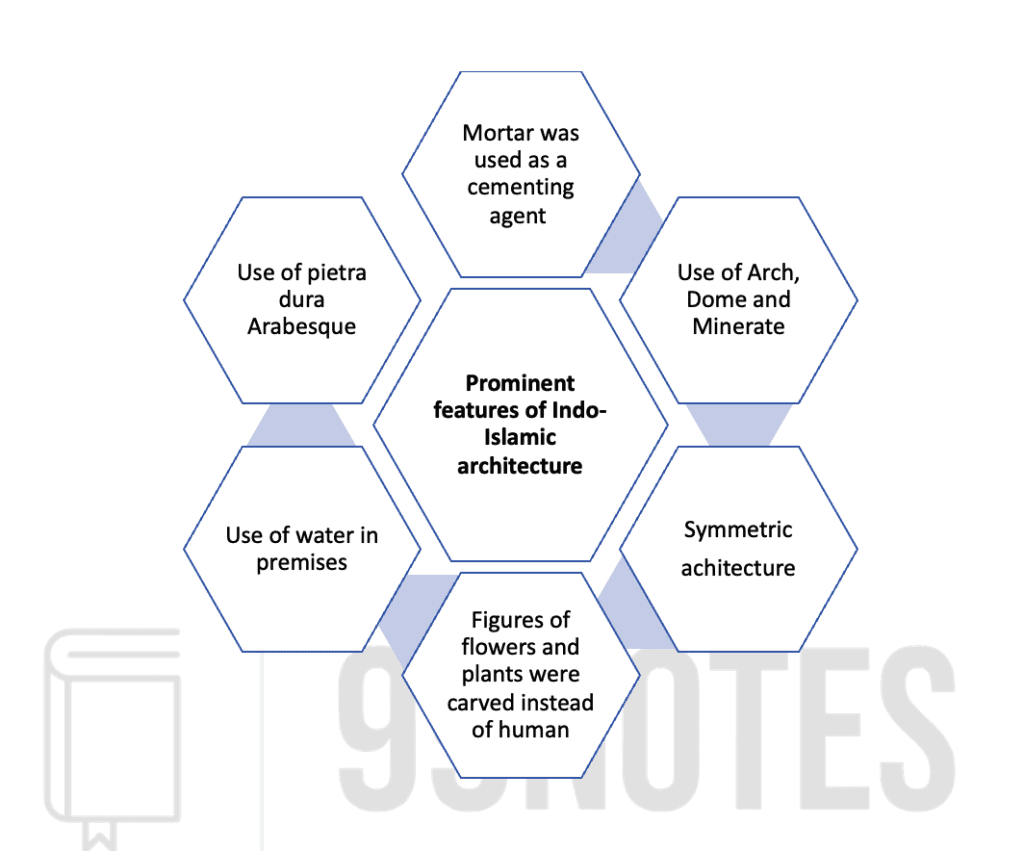
Influence of Indo-Islamic Architecture on the provincial style of Architecture:
- Malwa style: This style of architecture was developed in the Malwa region around 15 th century AD.
Features:
- This was mainly based on the Tughlaq style. They used the batter system, which Tughlaq mostly used.
- The use of different coloured stones and marble is the most prominent feature of the buildings.
- The use of Pietra Dura was also so much prominent.
- The buildings had large windows and were decorated with stylised use of arches and pillars. It made the buildings and rooms well-ventilated.
- The use of water is prominent on the premises.
- Example: Jahaz mahal, ashrafi Mahal etc
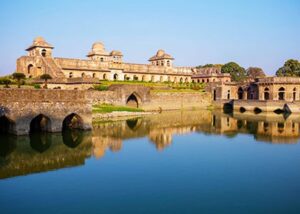 https://www.agatetravel.com/jahaz-mahal-mandu-india.html
https://www.agatetravel.com/jahaz-mahal-mandu-india.html
- Gujrat Style: The first Muslim dynasty to rule Gujarat emerged in the 14th century.
Features:
- The Indo-Islamic architecture of Gujarat drew micro-architectural elements from the earlier Maru-Gurjara styleof architecture and employed them in mihrab, minarets doors, roofs, and facades.
- During the 15th century, the use of minarets became so much notable and elegant feature of the Gujrat style of architecture. They are often placed in pairs flanking the main entrance, with elaborate carving.
- Some designs push out balconies at intervals up the shaft; for example, “shaking minarets” at the Jama Mosque, Ahmedabad.
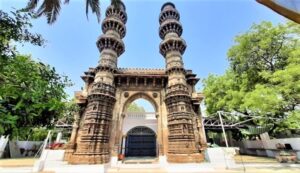
https://travfoodie.com/jhulta-minar-ahmedabad-still-an-unresolved-mystery/
- Deccan style: Their architecture was a regional variation of Indo-Islamic architecture, mainly inspired by styles from the Delhi Sultanate.
Features:
- The most prominent feature of the Deccan style of architecture was its special type of ceiling, which was made without any support.
- The use of iron clamps was a unique feature in providing support to the buildings.
- The use of 3 arched facades and a bulbous dome was also so much prominent in this style, which is unique in itself.
- Example: Gol Gumbaj.
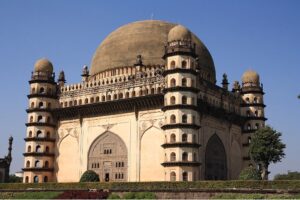
https://en.wikipedia.org/wiki/Gol_Gumbaz#/media/File:Gol_Gumbaj2.JPG
- Bengal style: Indo-Islamic architecturein Bengali architecture can be seen from the 13th century.
- In Bengal, Sultanate-era mosques featured multiple domesor a single dome, richly designed Mihrabs and Minbars and an absence of minarets.
- The use of sloping bangla roofs in mosques was also prominent.
- While clay bricks and terracotta were the most widely used materials, stones were also used from mines in the Rarh region, which is a distinct feature of the Bengal style.
- Example: Adina Mosque.

Terracotta work at Adina Masjid
https://www.taleof2backpackers.com/adina-mosque-malda/
- Jaunpur style: The Sharqi rulers of Jaunpur were known for their patronage of learning and architecture.
- The main feature of Sharqi mosque is the huge rectangular gateway (pylon) with arches.
- Monuments are made of stone with fine carving and latticework.
- Here the absence of miners is a notable feature, as most of the contemporary monuments of the Delhi Sultanate have this feature.
- The use of bold and forceful characters painted on huge screens in the centre and side bays of the prayer hall is also prominent. This is the most prominent feature of the Jaunpur style of architecture.
- Example: Atala Masjid, Lal Darwaja Masjid etc
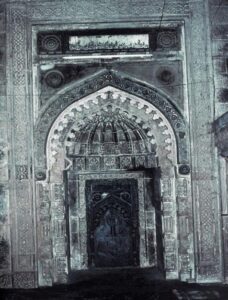 Bold and forceful characters painted on huge screens in the centre and side bays of the prayer hall
Bold and forceful characters painted on huge screens in the centre and side bays of the prayer hall
https://reclaimtemples.com/atala-devi-temple-jaunpur/
Conclusion
The influence of Indo-Islamic architecture on the provincial style depended on the distance of the province from the power centre (Delhi) and the association of the rulers of the province.
However, the local architects also retained certain flavours of the local architectural traditions. The building material varied by locally available materials and climatic conditions also.
Hence, from the above analysis, we can say that though Indo-Islamic factors had an immense influence on the provincial style of architecture but in a true sense, it is an amalgamation of both regional and indo- Islamic factors.
Upload Answer here
For Enquiry

11 July 2023 : Daily Answer Writing

10 July 2023 : Daily Answer Writing

9 July 2023 : Daily Answer Writing

8 July 2023 : Daily Answer Writing

3 August 2023 : Daily Quiz

3 August 2023 : PIB

Prelims : 2 Aug 2023 : Daily Answer Writing

Prelims : 1 Aug 2023 : Daily Answer Writing

2 August 2023 : Daily Quiz

2 August 2023 : PIB



